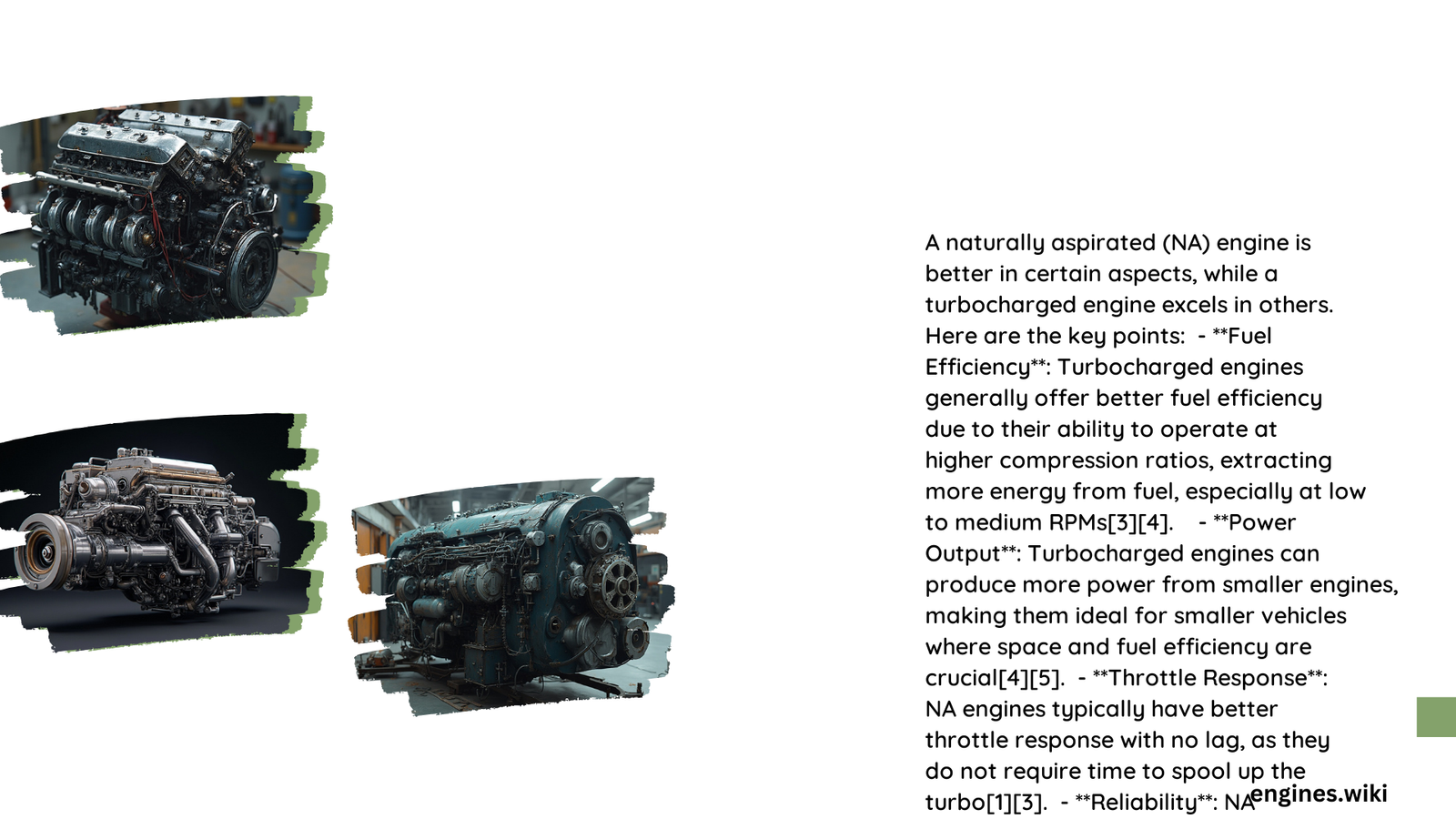Navigating the complex world of automotive engines reveals a fascinating debate between naturally aspirated (NA) and turbocharged powertrains. Vehicle enthusiasts and engineers have long discussed the merits of each technology, weighing factors like performance, efficiency, reliability, and driving experience. This comprehensive analysis breaks down the critical aspects that determine whether a naturally aspirated engine truly outperforms its turbocharged counterpart.
What Makes NA Engines Unique?
Naturally aspirated engines represent a traditional approach to powertrain design, relying on atmospheric pressure to draw air into the combustion chamber. Unlike turbocharged engines, NA engines generate power through natural air intake without additional compression mechanisms.
How Do Performance Metrics Compare?
| Performance Metric | Naturally Aspirated | Turbocharged |
|---|---|---|
| Horsepower Range | 150-200 HP | 200-250 HP |
| Torque Characteristics | Linear power delivery | Instant torque availability |
| Acceleration (0-60 mph) | 8-10 seconds | 6-8 seconds |
Why Consider Reliability Factors?
Key reliability considerations for NA engines include:
- Simpler mechanical design
- Fewer potential failure points
- Lower maintenance complexity
- Consistent performance across driving conditions
What Are the Fuel Efficiency Implications?
Turbocharged engines typically demonstrate superior fuel efficiency:
- Smaller displacement with equivalent power output
- More efficient combustion process
- Better thermal management
- Reduced fuel consumption under moderate loads
Can NA Engines Compete with Turbo Technology?

While turbocharged engines offer impressive performance metrics, naturally aspirated engines maintain significant advantages:
- Immediate throttle response
- Lower manufacturing costs
- Predictable power delivery
- Longer potential engine lifespan
What Drives Engine Selection?
Choosing between NA and turbocharged engines depends on multiple factors:
- Driving preferences
- Performance requirements
- Budget constraints
- Long-term maintenance expectations
Technical Deep Dive: Engine Characteristics
Mechanical Complexity
Naturally Aspirated Engines:
– Fewer moving parts
– Straightforward design
– Easier diagnostic procedures
– Lower replacement component costs
Turbocharged Engines:
– Complex turbocharger mechanism
– Advanced intercooling systems
– Higher precision engineering
– More sophisticated thermal management
Potential Performance Limitations
| Engine Type | Power Potential | Thermal Efficiency | Manufacturing Complexity |
|---|---|---|---|
| NA Engine | Moderate | Standard | Low |
| Turbo Engine | High | Enhanced | High |
Practical Considerations for Consumers
When to Choose NA Engines
Recommended for:
– Budget-conscious buyers
– Drivers seeking simplicity
– Long-term reliability prioritization
– Lower maintenance preference
When to Select Turbo Engines
Ideal for:
– Performance enthusiasts
– Drivers wanting compact, powerful vehicles
– Those prioritizing fuel efficiency
– Modern automotive technology lovers
Final Technical Assessment
The debate of “is NA engine better than turbo” doesn’t yield a definitive universal answer. Each technology presents unique strengths, and the optimal choice depends on individual requirements, driving conditions, and personal preferences.
Modern automotive engineering continues evolving, with hybrid approaches increasingly blending the best characteristics of both naturally aspirated and turbocharged technologies.
